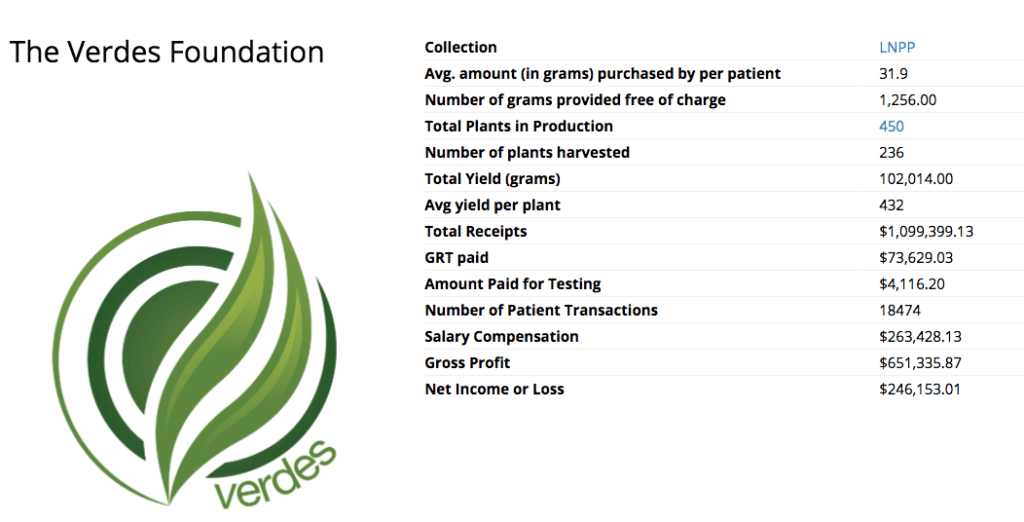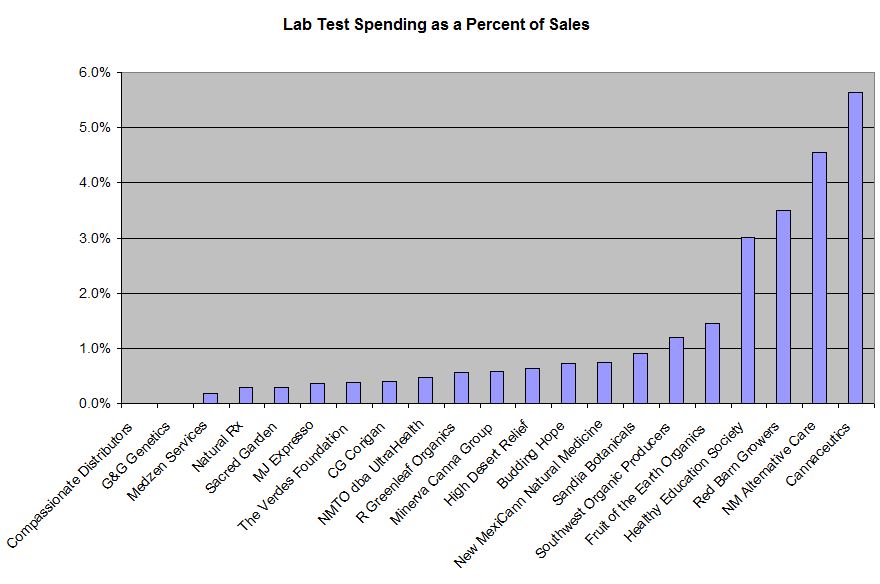Cannabis Lab Testing As a Percent of Sales Varies Dramatically
It can be very difficult to get operational and financial data on cannabis cultivators and dispensaries given that the industry is almost entirely privately held. Most states don’t publish data even in aggregate and certainly not at the operator level. Earlier this year, New Mexico, which requires its licensees to operate as not-for-profits, changed its confidentiality rules and began to publish this data. The Santa Fe Reporter took this data recently and made it available to the public using Silk.
The data from Q1 excludes a dozen licensees that were added in Q4 last year, but it includes detailed information about 22 different operators, which are known as licensed non-profit producers (LNPPs), providing information that includes sales, gross profit, net income, amount paid for testing, gross receipts taxes and salary compensation. Additional items include total plants in production, number of plants harvested, total yield, average yield per plant, number of grams provided free of charge, and average amount (in grams) purchased per patient.
The data is presented in many ways, and the user can create one’s own formats. The site includes a datacard for the Q1 data from each of 22 producers, the largest of which, as measured by sales, is The Verdes Foundation:

The database that Santa Fe Reporter has created on Silk allows the user to create charts and graphs. For example, here is a scatter diagram of sales vs. amount spent on lab testing:
This shows outliers, and one can click on the dot in the chart to identify the LNPP. In this case, two relatively smaller LNPPs, Cannaceutics and NM Alternative Care, spent about 3X more than the leading LNPP in terms of sales, Verdes, on lab testing despite having dramatically lower sales. Using the data provided, one can calculate a ratio of lab test spending relative to sales (note that one producer is excluded due to its not being required to test as a result of its geographical location):

It is somewhat surprising to see such variability between the LNPPs, with 4 spending more than 3% of sales to test, 2 spending between 1 and 1.5%, and 15 spending less than 1%. NM Alternative Care’s website points to this spend as intentional, suggesting “All product undergoes full panel third party laboratory testing above and beyond state requirements.” Consumers who are concerned about potential contaminants or potency will find this information very helpful.
Kudos to New Mexico’s Department of Health and thanks to Santa Fe Reporter for bringing transparency to the state’s medical cannabis program. While the New Mexico medical cannabis program is very different from other states, the data still provides utility to those trying to better understand the economics of the cannabis industry and New Mexico’s market structure.
